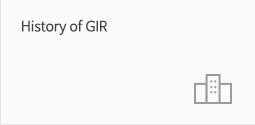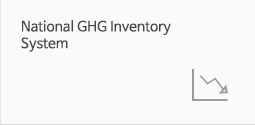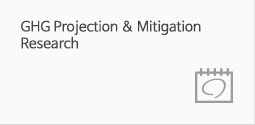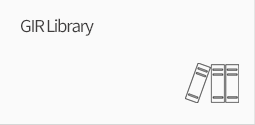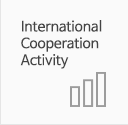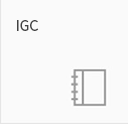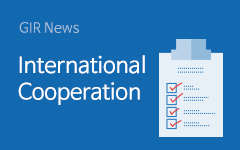board Read
| Title | [Daily Journal] Vincent Woon Kok Sin - 10 August, 2022 |
|---|---|
| Name | Vincent Woon Kok Sin |
| Date | 2022.12.21 |
| Views | 1,393 |
|
Training on Agriculture and LULUCF Sectors
Written by: Vincent Woon Kok Sin (Malaysia) Date: 10 Aug 2022 The class started with a presentation by Prof Pil Joo Kim today. Prof Kim presented the organic amendments in the rice paddy. He first defined what soil quality is and why this is important for us to main a good soil quality. He showed some exciting results about maintaining long-term fertilization for rice productivity. The value of soil carbon is always essential to the farmers (for soil quality enhancement) and society (for ecosystem services). Prof Kim has emphasized the benefits of restoring C levels in the soil. He also showed us how the soil C stock is being depleted due to land use change and how conservative management can increase the soil C stock. He provided agricultural practices, such as cover cropping, soil fertility management, elimination of summer fallow, and organic amendments to improve soil C stock.  He also showed us how to quantify the net ecosystem C budget. I was attracted by his four laws of ecology, in which everything is connected to everything else, everything must go somewhere, nature knows best, and there is no such thing as a free lunch. He then continued his lecture with the sources of N2O emissions, nitrogen fertilization, essential elements to plants, the effect of nitrogen fertilization on rice yield, and the nitrification and denitrification process. Prof Kim also taught us how to estimate the direct and indirect N2O emissions. This includes collecting the appropriate activity data and selecting the emission factors if default values from IPCC guidelines are used. The afternoon lecturer was provided by Dr Jong-Su Yim from the National Institute of Forest Science. He kicked off the lecture by stating the roles of the LULUCF sector. He also presented some methods to report a land-use matrix (practiced by Finland). This includes the NFI sample plots and weighted moving average to classify land-use based on regular surveys. Another method would be based on satellite data (practiced by New Zealand). Dr Yim has also highlighted the methodological approaches, QA/QC methodology, and carbon pools. A few generic methods for GHG emission/removals, such as annual carbon stock changes, gain-loss method, stock-change method, dead organic matter (dead wood/litter), the annual change in carbon stocks in soil, mineral soils, GHG emissions from fire, have been mentioned. The flow chart on how to select the appropriate tier is also highlighted. Dr Yim also emphasized that adopting country-specific emission factors in the forestry sector is always necessary. That includes the emission factors for living biomass, dead organic matter, and soil. The emission factors could be obtained based on a guideline for a survey manual for forest biomass and soil carbon. Dr Yim has also shared with us the institutional arrangements for national GHG inventory development in Korea. The data sources for the area by land-use categories are mainly from KFS, Statistics Korea, Cadastral statistics, MOI. The inventory compilers are NiFOS, NAS, NIAS, NIE, and LHI. The processes of QA/QC for GHG inventory, which involve TACCC principles (transparency, accuracy, completeness, comparability, and consistency), are also being captioned. Dr Yim also talked about the history, function, and roles of the Korean National Forest Inventory. NFI1-4 mainly involved circle inventory, stratified cluster sampling, and forest cover maps. For NFI5, it included systematic cluster sampling, annual inventory with 5 panels. For NFI6, it involved integrated NFI+FHM. Dr Yim also presents some methods used to estimate the growing stock based on NFI data. Lastly, Dr Yim mentioned the importance of the forest as sinks and reservoirs under the Paris Agreement.  The afternoon session ended with three country presentations by Ms. Yoisy Belen Castillo from Panama, Ms. Alilia Fine from Tonga, and myself from Malaysia. Three of us presented our country’s national circumstances, institutional arrangements, the current status of the LULUCF sector, and the limitations and improvements of the sector.   Coordinator's comments: I am too impressed by the four laws of ecology. It is exactly how nature works and what nature consistently tells(or teaches) us which obviously applies to the principle of both emission production and mitigation. Reading your journal on lectures by Professor Kim on agriculture and Dr Yim on forestry, I feel that what was covered during lectures were not easy at all and yet intriguing. I am amazed by your journal everytime I read it since you never allow any minor knowledge to slip through your fingers and note every detail of knowledges shared by lecturers. Always enjoy reading them as I can clearly see great efforts of yours in writing each and every of them. Just to let you know, Vanika said in her journal that Malaysia’s Forest Enrichment Program as part of its mitigation efforts was noteworthy – your presentation on this day was inspirational to your fellow trainees which is remarkable indeed considering challenges you had to go through to deliver it virtually. You have proved that good presentations, regardless of its format, never fail to deliver key messages to audience. |
|


